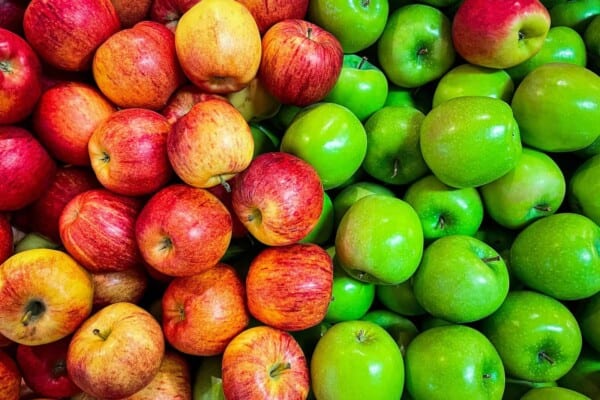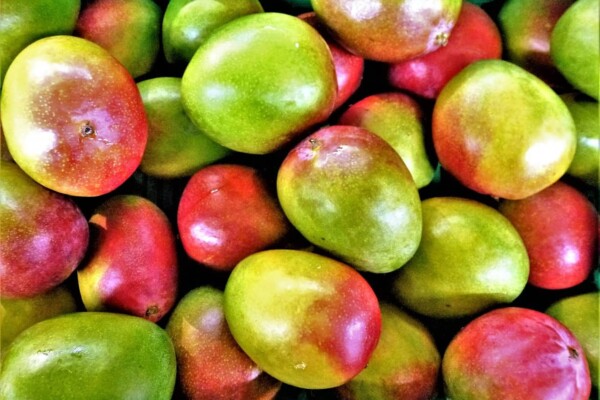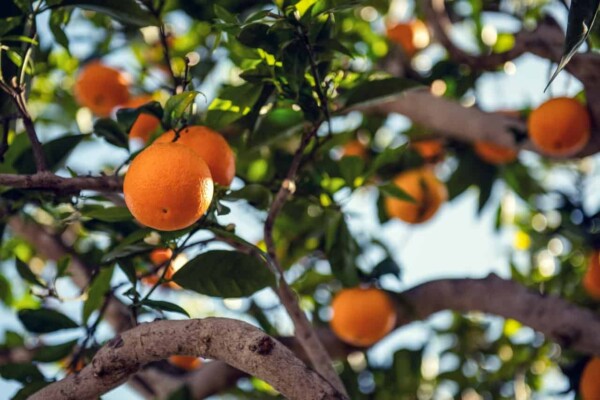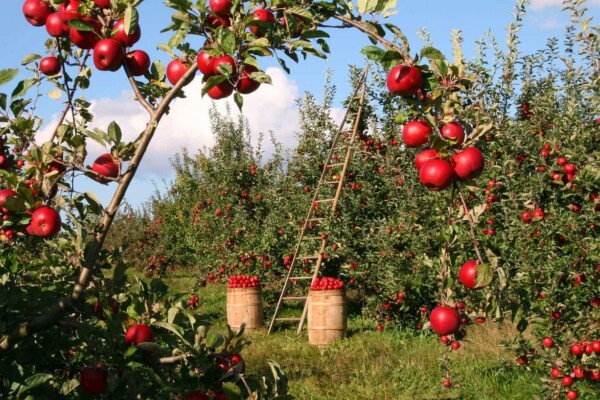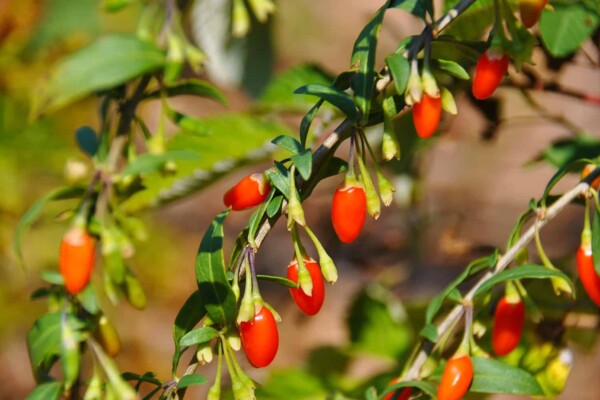Most of us are fully committed to vegetable gardening, but why stop there? It’s wonderful to walk into a store and drop a box of apples or peaches into your basket. Who doesn’t enjoy delicious fruits? But on the other hand, stepping outside and picking organic fruits directly from your trees is a completely unique scenario.
There is an unmistakable allure to plucking fruits straight from your backyard. If you’re a bit nervous about growing fruit trees because you believe they’ll require precise trimming and a high standard of service, don’t be. The small amount of work necessary to grow and preserve a fruit tree is more than compensated for by those tasty fruits and numerous other benefits.
Clearly, if we respect our trees, we will make sure they are prepared for optimum production efficiency when the moment arises. The correct approach we are referring to is pruning. Trimming fruit trees is a skill that requires some knowledge, but anyone can learn that. You just need to dare a little bit. Pruning a tree that you love is like trying to discipline a misbehaving child; you know it’s good for everyone.
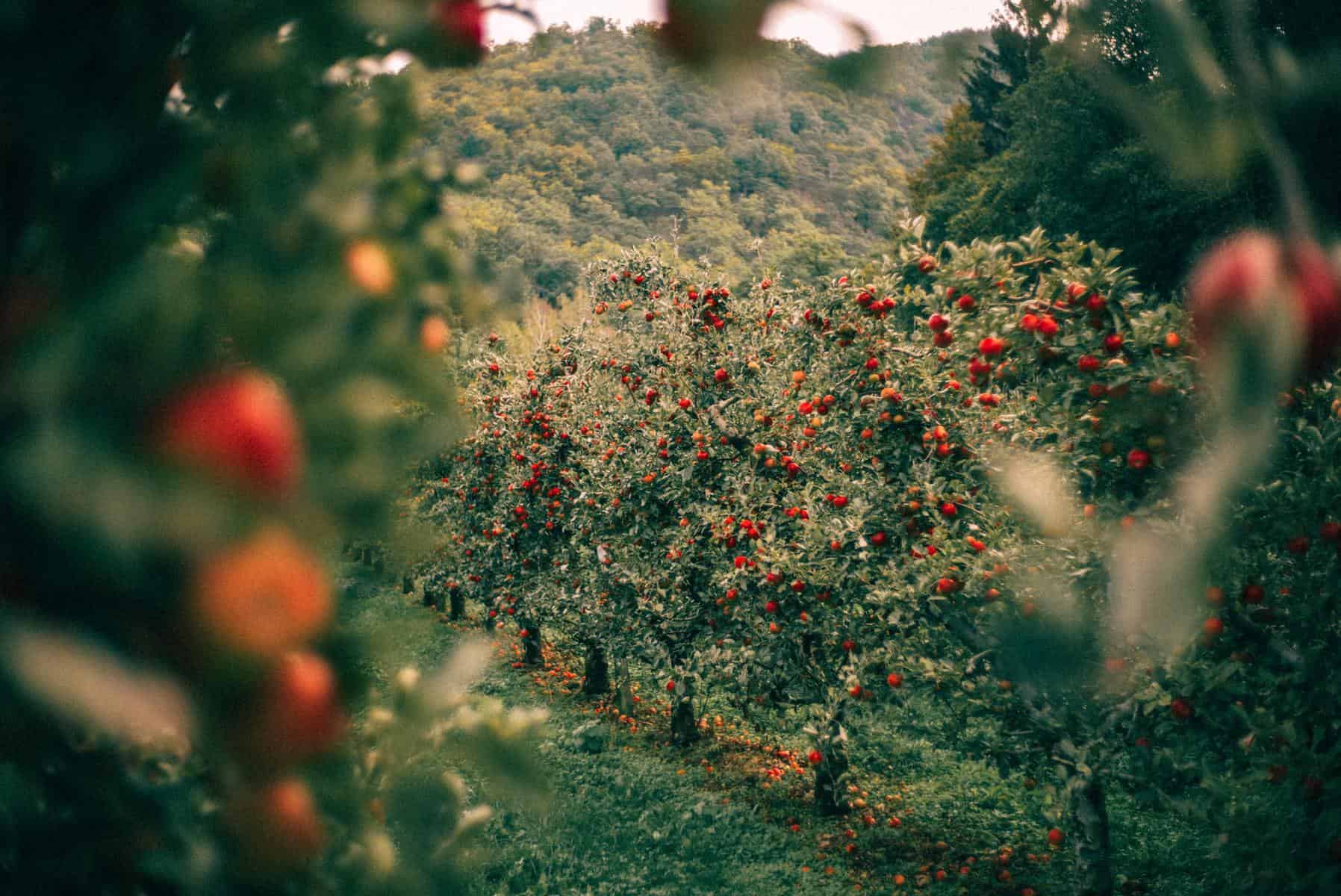
Unfortunately, the talent of fruit tree trimming cannot be conveyed in a brief article or video. Nevertheless, fundamental pruning techniques are relatively simple to comprehend, and once mastered, nearly anyone can properly handle a fruit tree, season after season. When and how to chop fruit trees is a subject of debate, as different as chalk and cheese.
There are countless periods and methods for pruning a fruit tree, and they all appear decisive. Not to mention, there are so many distinct tree variations that if you Google “when and how to prune fruit trees” (which you may have done just now), you’ll find a variety of techniques for practically every species.
If it all looks a little confusing and complex, after reading the subsequent guide, the concept will become clearer. We’ll learn how to cut the tree and what to remove to keep it in shape and blooming year after year.
What Does Pruning Mean?
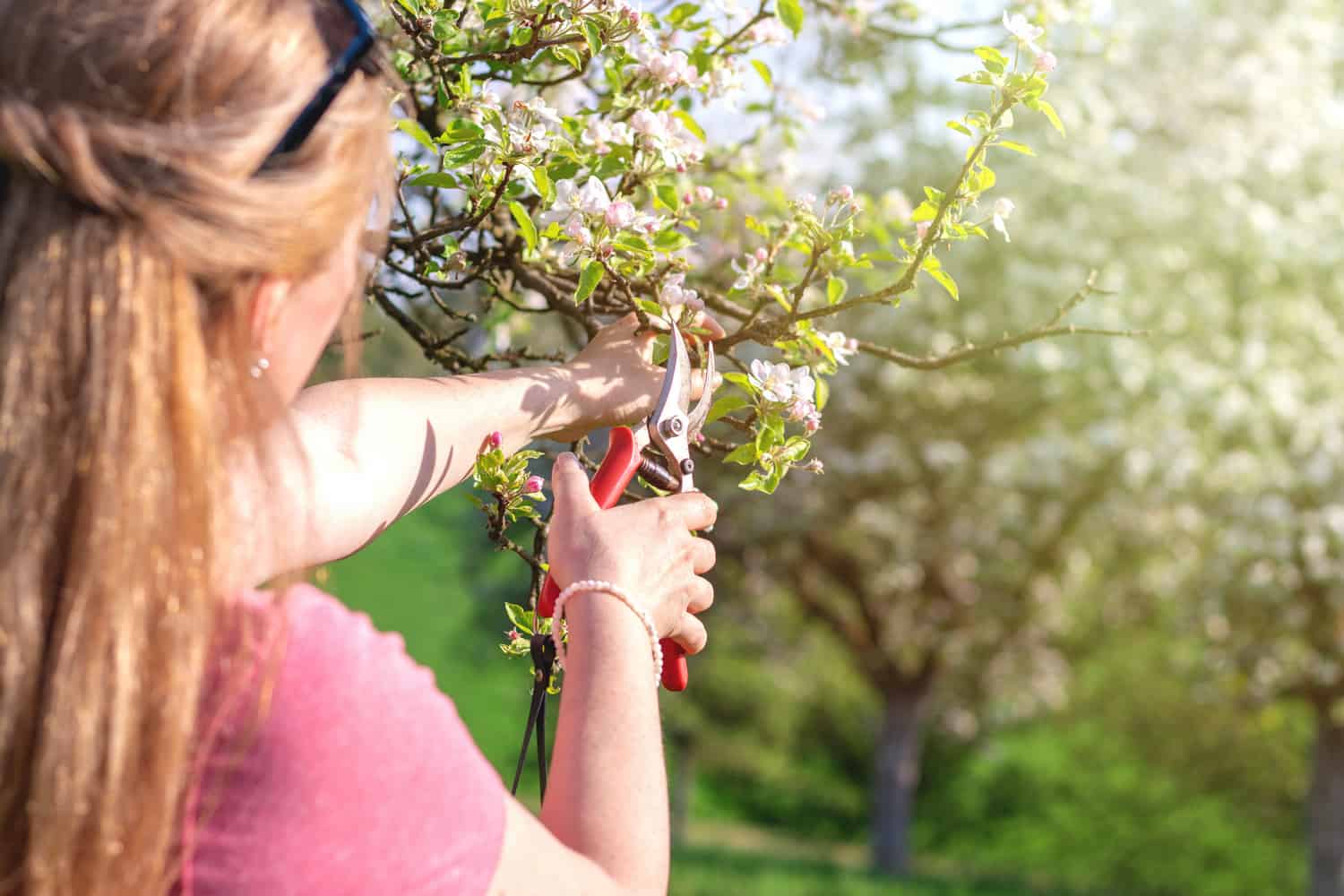
The key premise of pruning is that cutting back stimulates regeneration, which is very profitable since the results consist of increased fruit output. Think of it as cutting your hair in order to grow longer. From time to time, you have to get rid of the dry ends. It’s the same with pruning. To progress, one must first withdraw, and this is precisely what a cutback accomplishes.
Simply put, pruning is the process of removing parts that are no longer mandatory, are ineffective, or are of no service to the tree. Pruning correctly will lead to premium-quality fruits and a much longer life for your trees, but if you do it wrong, everything might be ruined. Pruning badly can even result in the death of your trees, so you should be very careful.
But, first of all, you must grasp that pruning and training are two distinct methods for changing the evolution of any plant. Training is mainly focused on the shape of the tree, simply directing its growth toward a specific form, while pruning deals with the usefulness of the tree to fix or preserve its health.
Therefore, it is critical to train new fruit trees to ensure their correct evolution, since it is more productive to train them to develop in a particular direction than to fix them with trimming. The training part should come into play during the tree’s first 4–5 years of existence, whereas pruning is carried out for the whole tree’s existence.
Why Prune?
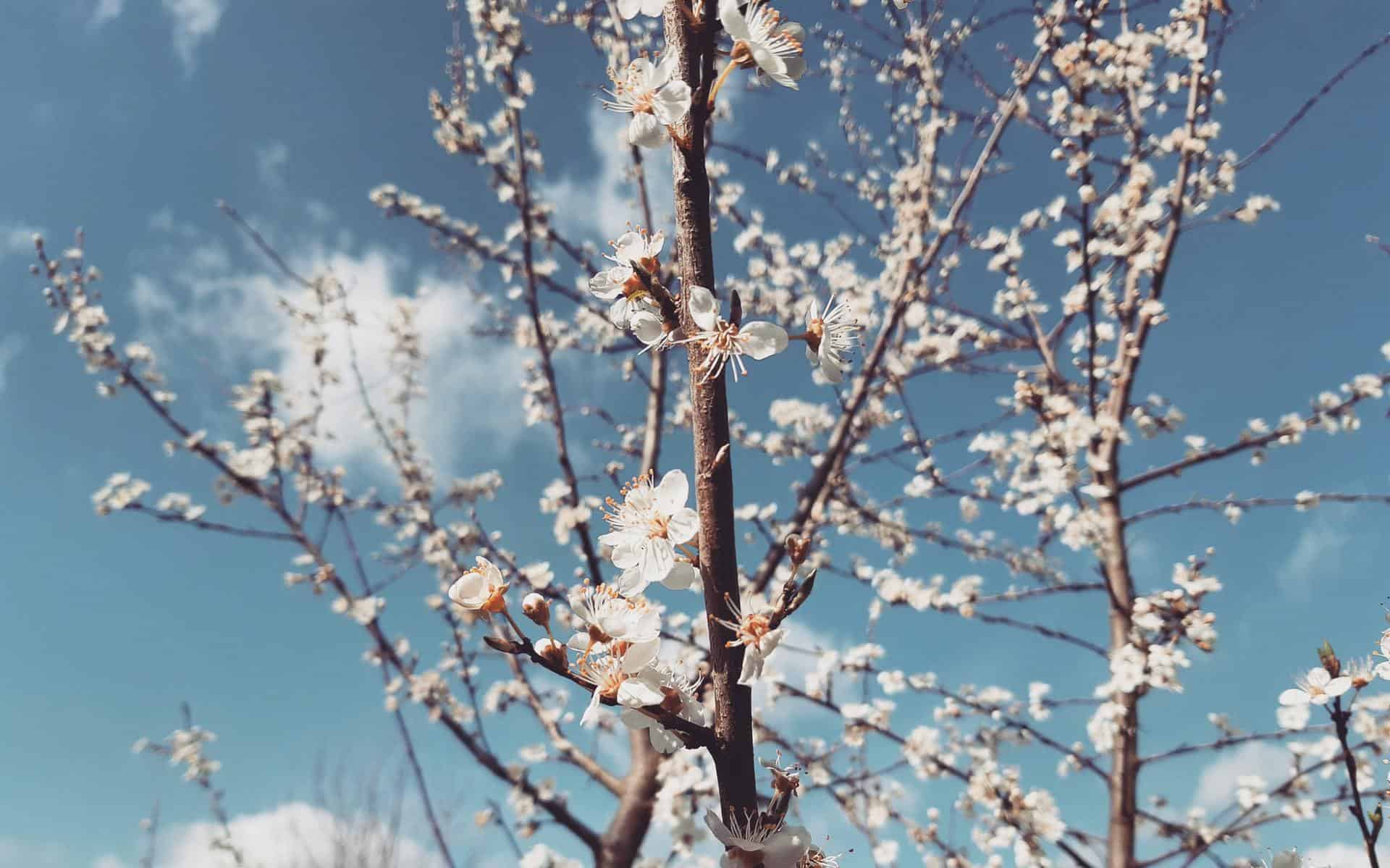
There are many key advantages to pruning. To begin, a tree requires pruning to ensure proper evolution following planting. Bear in mind that trees, like humans, have some boundaries. Pruning the tree pushes the existing buds to develop faster and more vigorously because decreasing the number of growing spots enables the surviving ones to expand more rapidly.
When trees are not trimmed, many display a biannual cropping cycle in which they yield an abundance of very tiny fruit one year and nearly none the following season to avoid depleting their energy stores. Thus, pruning maintains control over the age of producing trees, which improves fruit quality.
Young trees must be sculpted via adaptive pruning in order to establish the robust foundation necessary to support fruit crops. Secondly, creative pruning enables you to mold your trees into specific aesthetic shapes. Older trees that have been mistreated can also be regenerated through reparative pruning, which makes them healthier and longer-lasting.
Pruning tends to expand the crown, allowing light to pass through all the branches. The more sunlight a tree receives, the more fruits it will yield. Plus, by exposing the canopy to sunlight and air, it can dry out more quickly, thereby reducing health concerns. Similarly, damaged leaves can be removed to keep the disease from spreading to other trees, which will cut down on the need for pesticides.
Unpruned trees can have dense crowns of branches that are too close together. Because of their large canopies, they are susceptible to wind damage during severe storms. Moreover, it can also help to keep the tree size reasonable so that people can get close enough to it and pick all of the fruits.
When to Prune?
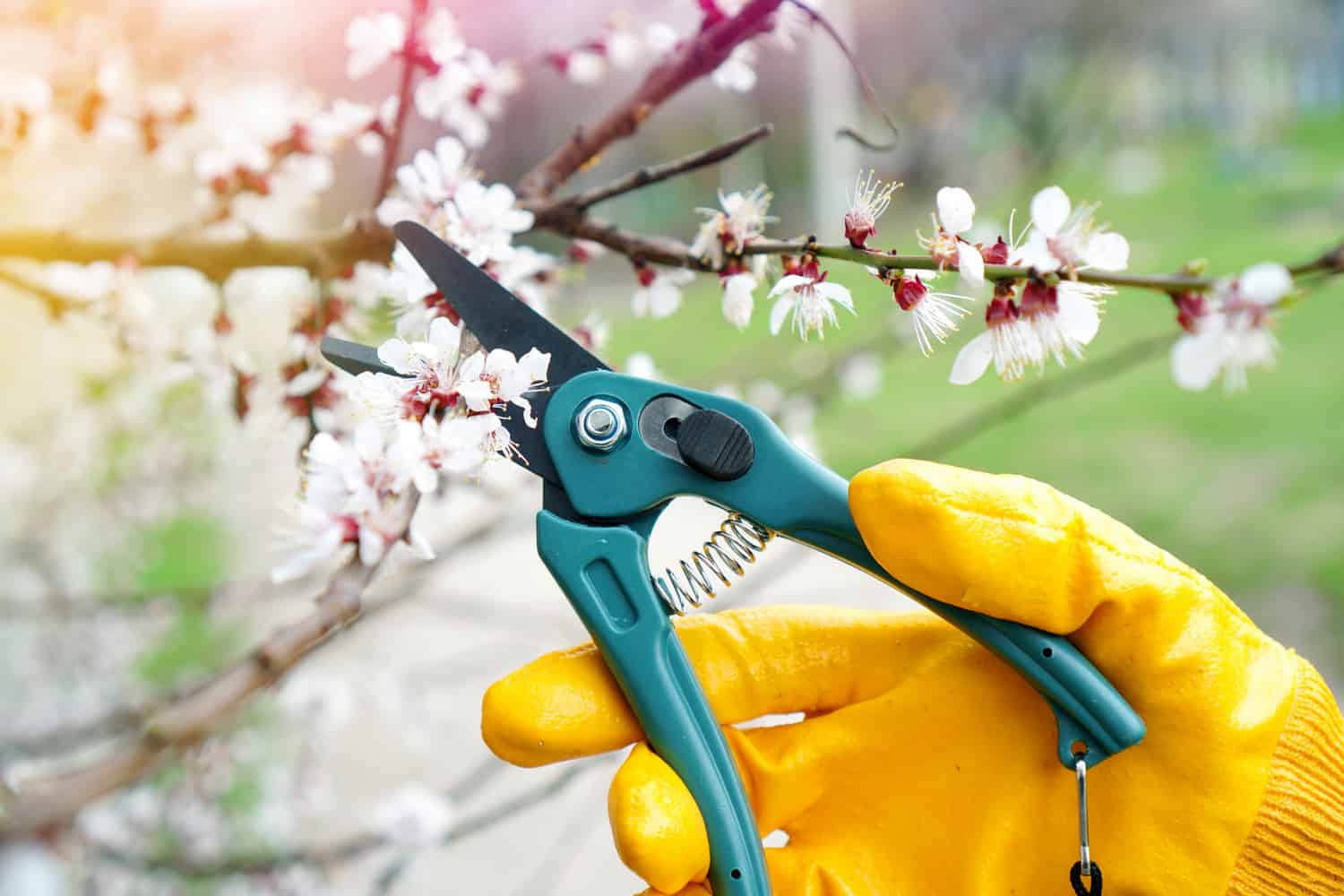
When the blade is sharpest and you have the time. Or, at least that was a common belief in the old days. Indeed, there are some divergent views on this, but one point we can all concur on is that you shouldn’t do it shortly after watching “The Texas Chainsaw Massacre”.
When to trim your fruit trees is an issue that relies on your intentions. Do you wish to prune a large tree? Or are you looking for a way to accelerate the blooming of a budding fruit tree? But, to sum it up, pruning is most productive in late winter or early spring, when the trees are still dormant but don’t wait until buds begin to emerge on branches.
Winter Pruning
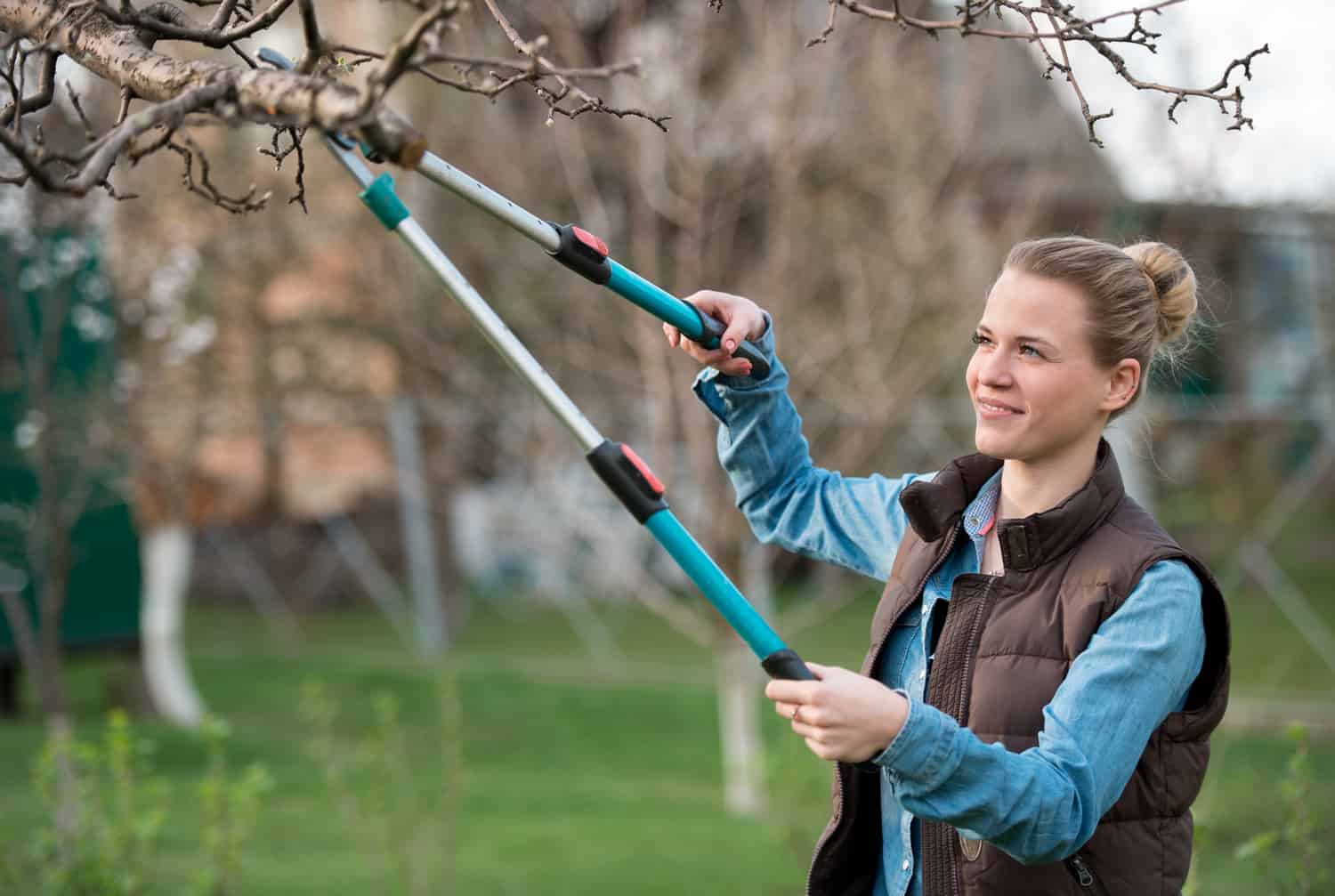
During autumn, trees get vitality from their verdant leaves and save it in their underground structures for the cold. Once the energy in the foliage has been drained out, it will become brown and die. As a result, your tree will consume only a tiny fraction of its reserved minerals to survive winter.
Consequently, if you reside in a chilly area, winter pruning is an excellent choice as the tree is latent, without leaves, blossoms, or fruit. This makes it simple to see the tree’s skeleton and determine which cuts to take.
Apart from that, since you’re retaining the high-quality branches while discarding the sick ones when spring arrives, the tree will not spend its resources growing low-grade elements. Rather than that, it will concentrate its power on creating rich and delicious fruits.
Even so, pruning overly in the cold season can generate extreme vegetative development, which inhibits fruit formation. Thus, pruning should be limited to mild cutting and clearance of dead or defective branches.
You must understand that timing is crucial when it comes to dormant pruning. It should commence as late as possible in winter to prevent freezing. But you shouldn’t wait too long, either. The smart way to do things is to prune the trees with the latest flourishes first and the ones with the earliest blooms last.
For instance, you might begin with apple and pecan trees, then move on to peach, cherry, and plum trees. Another consideration is the tree’s lifetime. Therefore, within a given fruit kind, pruning should start with the elder trees, as the younger ones are more vulnerable to cold harm.
Summer Pruning
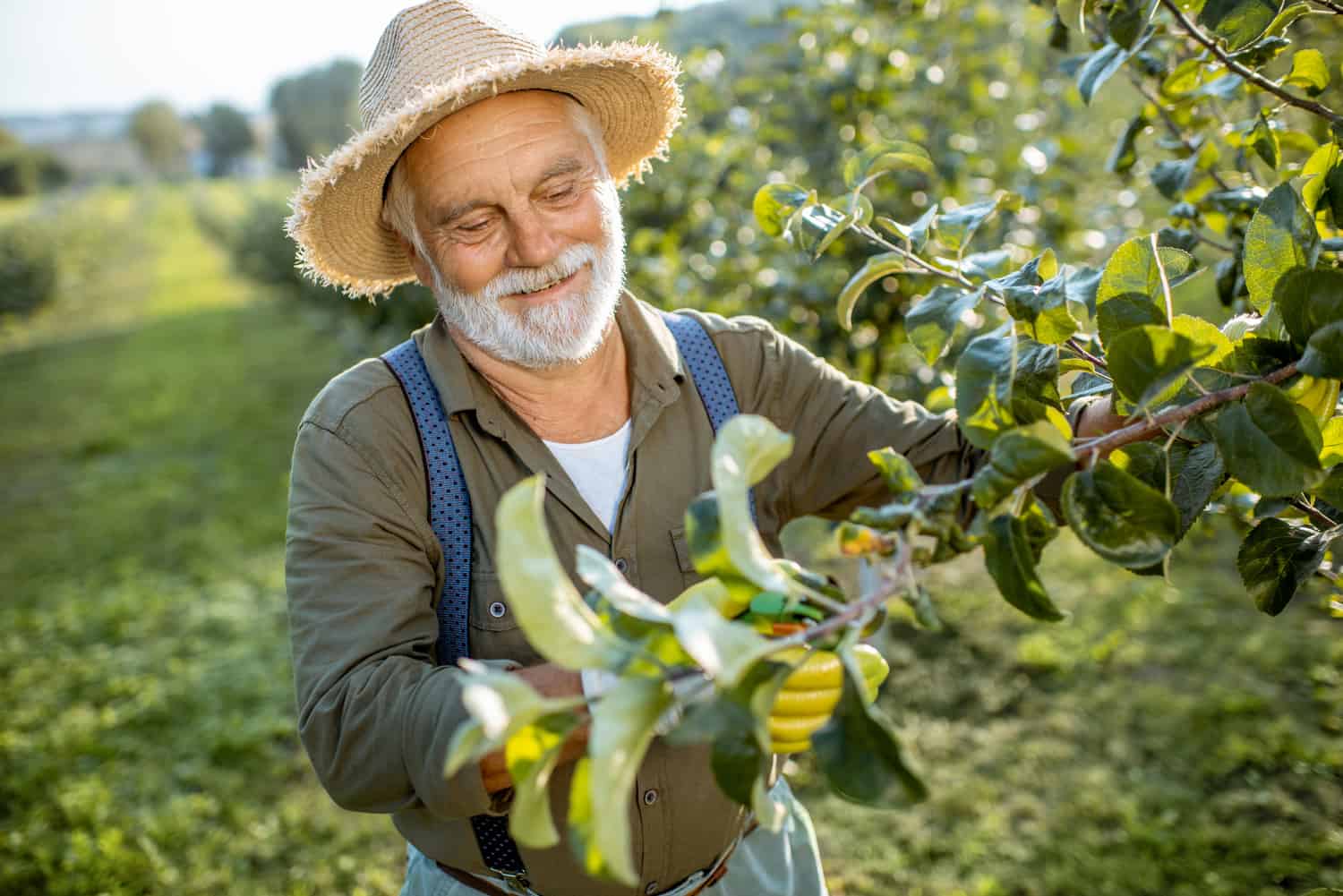
Your tree had an active springtime! But, once the tree’s spring blooms are done and stored nutrients have been used up, it will spend most of the summer replenishing its nutritional reserves.
Even if your initial trimming activity occurred in the winter or early spring, you can resume pruning throughout summer. But, take into account that summer cutting reduces energy-producing branches and can lead to a decline in the tree’s development. As a result, only detach damaged, crisscrossed, pushing against each other, or sick new branches.
Summer trimming can happen as soon as buds appear, but it is often wise to delay until new growth reaches several inches in length. This is especially relevant for young trees, which are more prone to injury from late-season frosts. Therefore, cutting should be avoided after mid-August.
Types of Pruning Cuts

Pruning cuts are classified into three broad categories: thinning, heading, and bench cut.
Thinning cut
A thinning trim eliminates the limb at its base from a tree’s core or a side branch. The cut must be angled so that the water flows and does not gather when it rains. Bear in mind to cut only the branch’s collar, which is the expanded section of the branch that connects to the trunk or another limb. This collar is made up of cells that grow over the injury and enclose it.
This type of cut is made to expose the canopy while maintaining the tree’s look. While reducing tree branches does not alter the general appearance of the tree, it does improve airflow and light. Thus, for the majority of the time, you should employ thinning cuts.
Use a thinning cut:
- to get rid of a lot of thick foliage and let more air and light get into the heart of the tree and over its shaded edges.
- to boost expansion from the branches immediately beneath each incision.
- to expose the tree’s structure.
- to readjust the tree’s form.
Heading cut
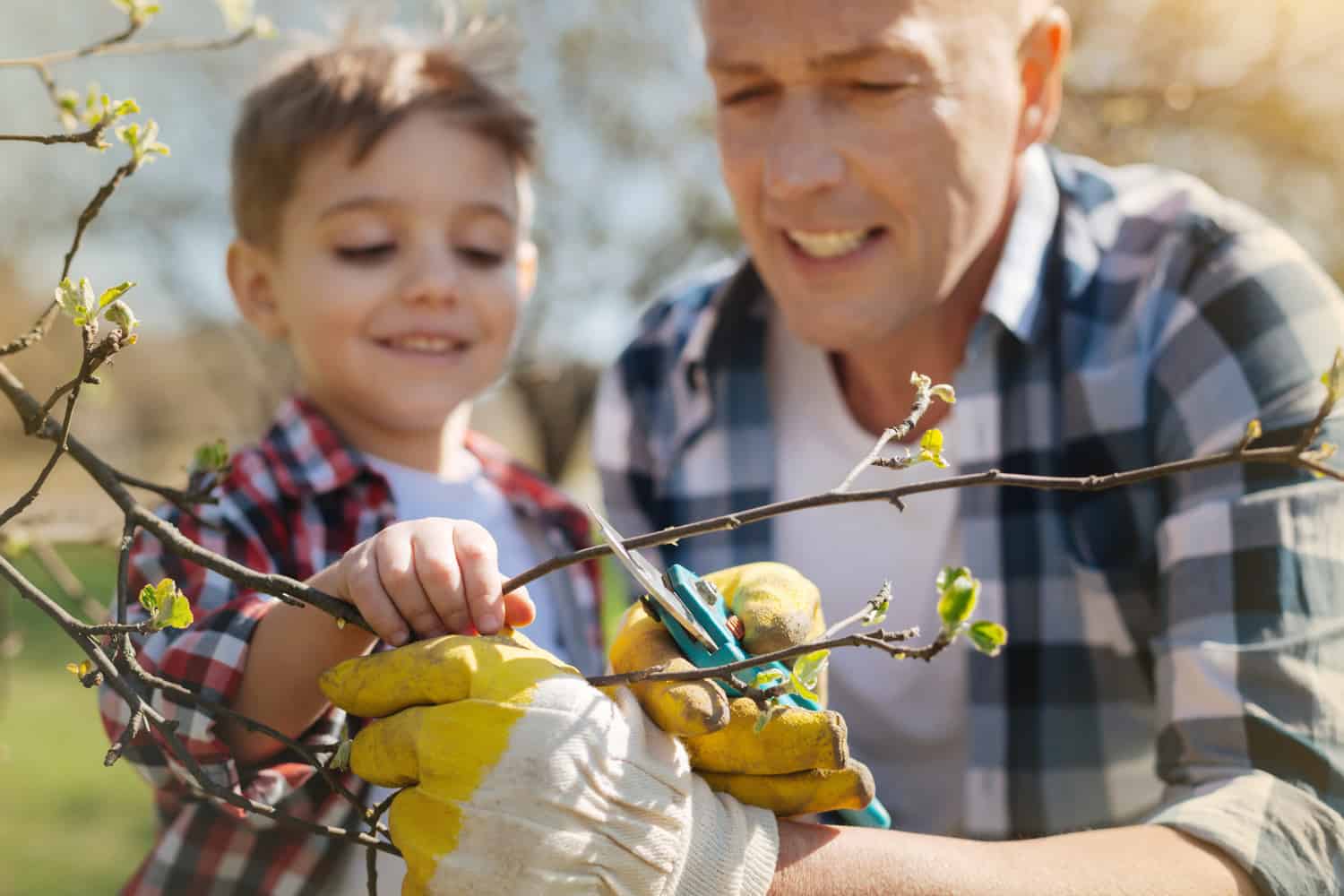
Heading cuts can be made everywhere along the branch, but they must be done at a slant directly above the bud. Heading cuts are often applied in small amounts to new fruit trees and seldom to mature ones. They are used for reducing and hardening branches and enhancing blooming.
Heading only takes away a piece of a branch, whether it is the limb end and the first few buds or a branch just below one or more side branches. Trim approximately a couple of inches above a blossom or a limb. If you’re cutting off a bud, take note of its orientation. This is the angle from which the new branch will develop.
Trimming to an exterior-looking bud has the goal of directing the new growth away from the tree’s base.
Use a heading cut:
- on the short branches: to limit the number of buds, the tree must nourish and expand, allowing the remaining ones to produce more strong blooms and fruit.
- on large branches: to reorganize a tree’s major branches.
- across all branches: to cut wood that is rotten, infected, or deformed.
Bench cut

A bench cut prunes robust, vertical branches down to side limbs that have the same diameter as the trimmed branch but are less straight and forward-expanding. Bench cuts are employed to expose a tree’s core and extend its branches externally. This is a significant cut and can be used sparingly.
Regardless of the type of cut you might choose when pruning, it is critical to utilize practices that promote rapid wound healing. Quick recovery helps to reduce the risk of illness and pest infestation. Trimming cuts should be made precisely, avoiding stubs.
Furthermore, when producing massive horizontal cuts, they should be gently slanted to prevent water from sitting on the trimming site, enabling decaying and pathogenic organisms to proliferate.
Training Systems
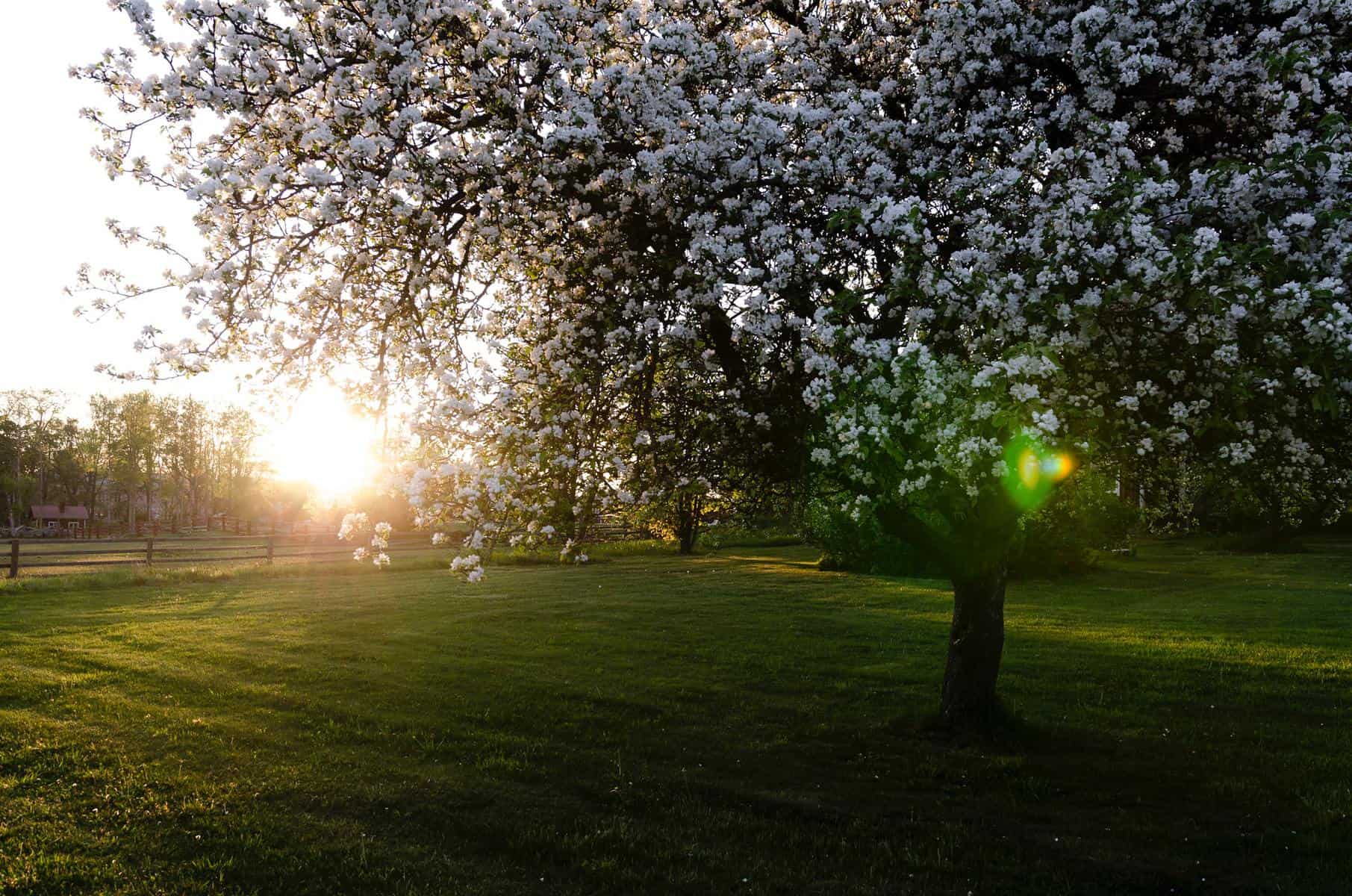
How you train and cut your fruit trees will vary according to the type of tree. Fruit trees are trained to take on a wide range of forms, including the standard leader, vase, espalier, etc. Once trained into the desired shape, it must be preserved.
Central Leader Training
Apple, Pear, Plums, Cherry & Pecan Trees
A central-leader tree is defined by a single, straight trunk known as the leader, from which all side branches originate. This conical-shaped tree has a broad base and a tiny top. As is the case with all vigorously developing limbs, the leader must be restored each year. The leader’s topmost bud creates a powerful new one, and no side branch should be permitted to grow taller.
Side limbs should be chosen from branches that split off from the primary leader, vertically spaced at 4-6 inches wide. They should have more horizontal expansion than vertical growth and radiate at various compass angles from the trunk.
Keeping the core leader in place, particularly in the early years, generates a broader perspective on the structure branches beneath it. If small trees are allowed to start producing fruit too soon, the central leader will die.
Open-Center or Vase Training
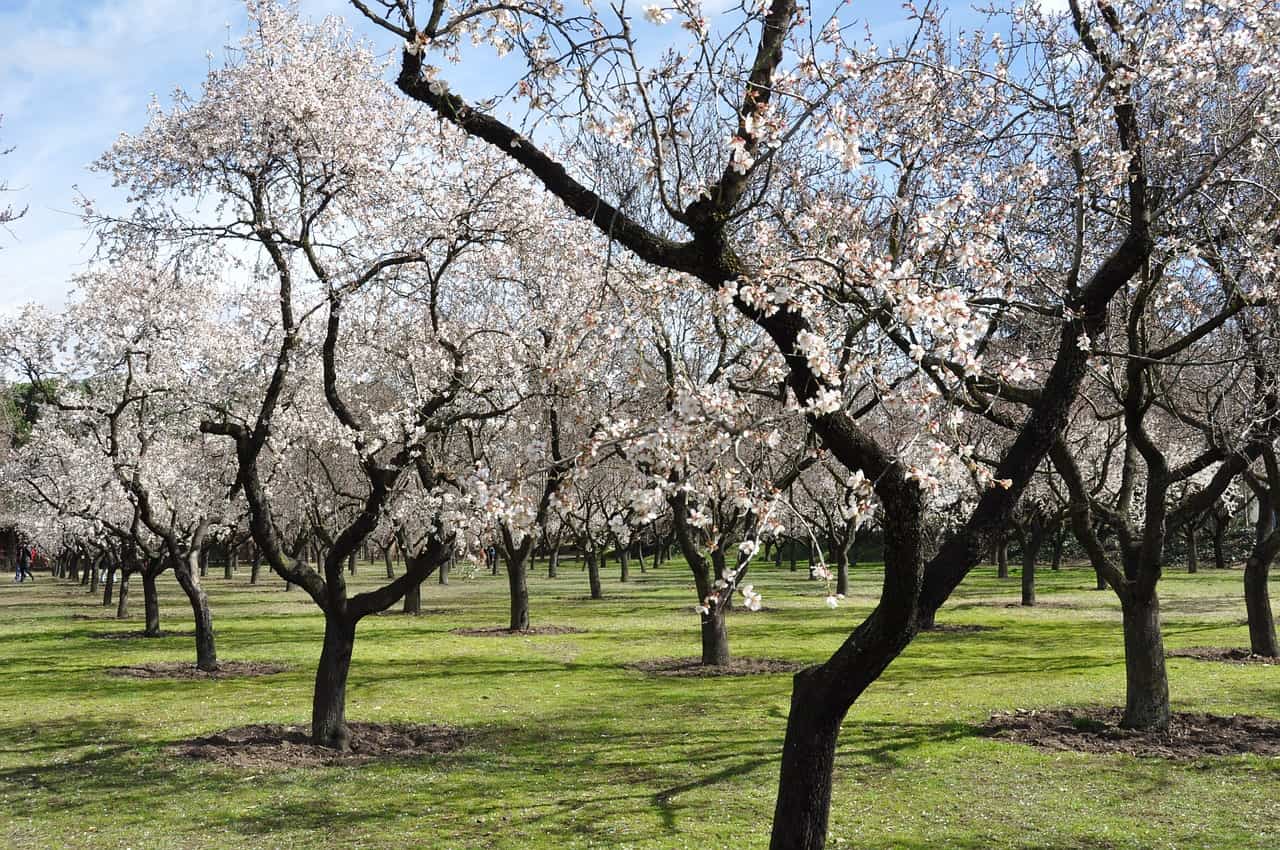
Peach, Nectarine, Orange, Almond, Olive, Pomegranate, Apricot & Japanese Plums
The leader is withdrawn in the open-center technique, creating a vase-shaped tree with vertical growth gone from the core. The open-center tree has three to five primary limbs, called scaffolds, growing out of the trunk in place of a single leader. These branches should extend at diverse angles, starting from the bottom at a distance of no less than 18 inches but no more than 36.
This training approach permits sufficient light to penetrate the tree, reducing the shadowing issue that plagues large species. It is the easiest form to time for new orchardists, but it should be done carefully, balancing expansion uniformly across the scaffold limbs.
The Best Pruning Tools
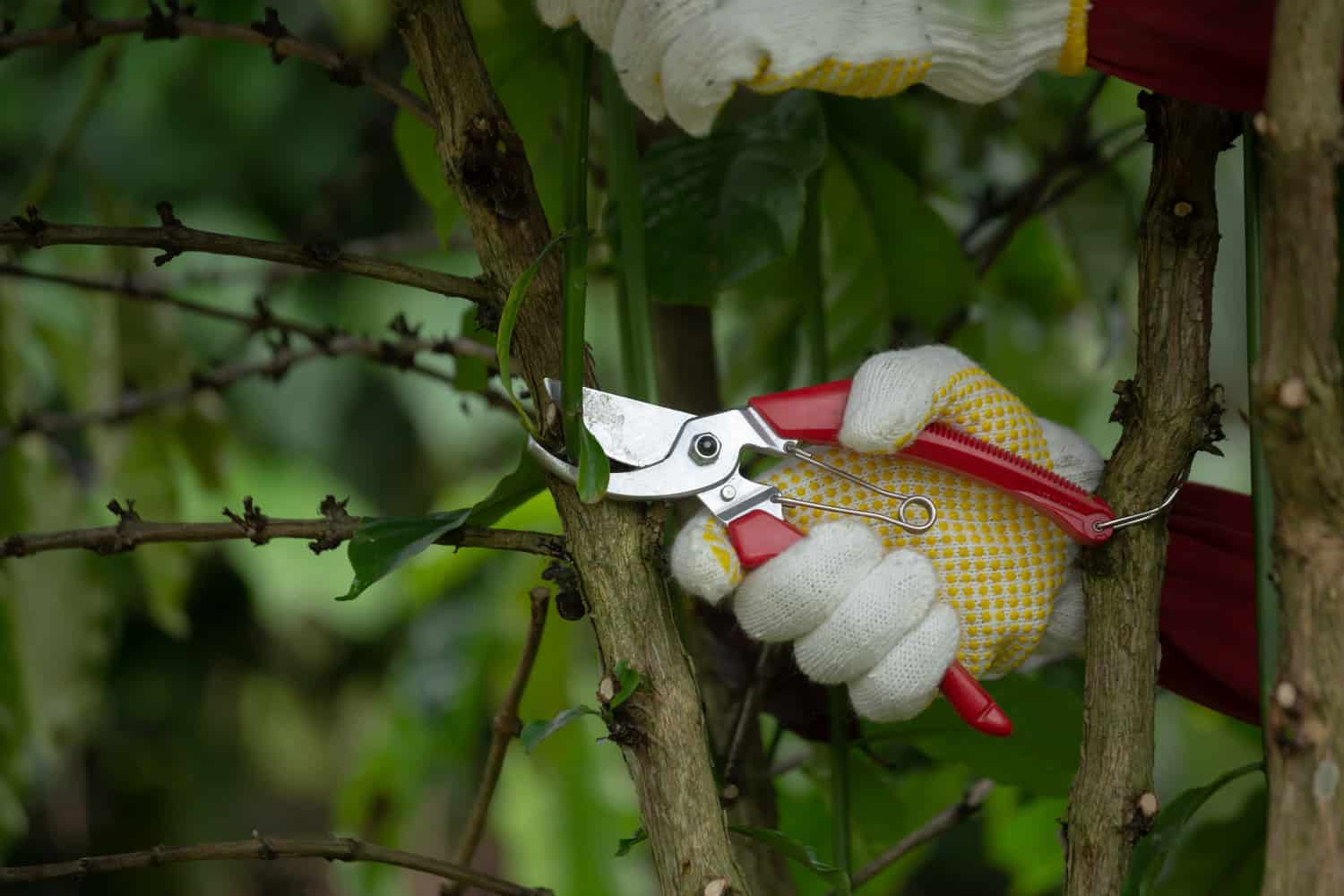
Having the proper pruning equipment will make gardening smoother and your fruits will be richer and more appealing. Today’s market offers you a wide range of tools to choose from, each with its own function, form, and size. What’s the distinction between them? Let’s have a look and find out.
1. Secateurs
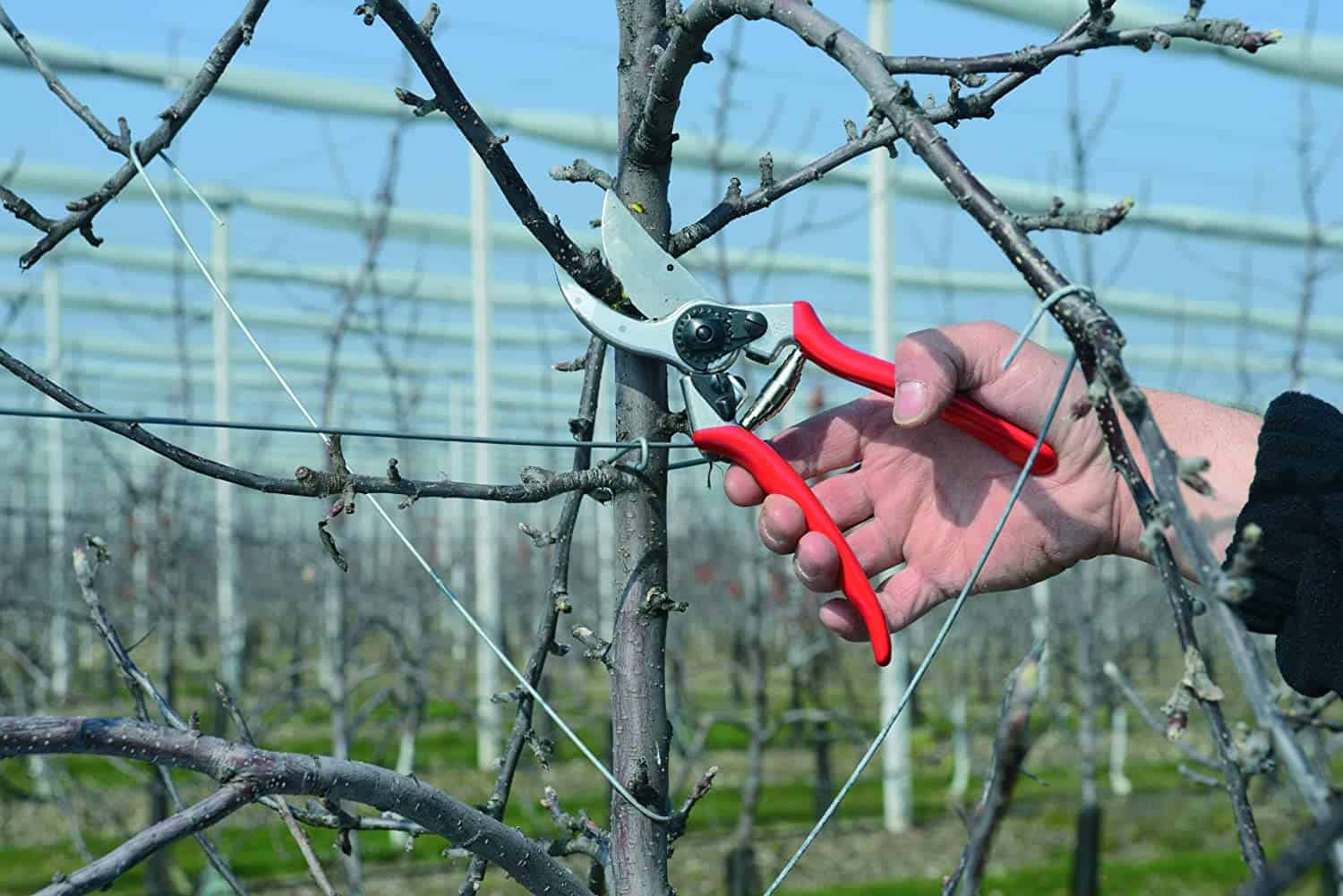
In regards to pruning, this is arguably the most commonly used tool. Bypass pruners have a scissor-move and are excellent all-around cutters. They are great for trimming fragile branches up to the width of a crayon. On the other hand, anvil pruners have a single flat razor.
The blade cuts and shuts onto the anvil, which has a level edge. This style of pruner is preferred for trimming dead branches since the blade tends to smash limbs when trimming. They’re also some of the best gardening tools out there.
2. Pruning Saw
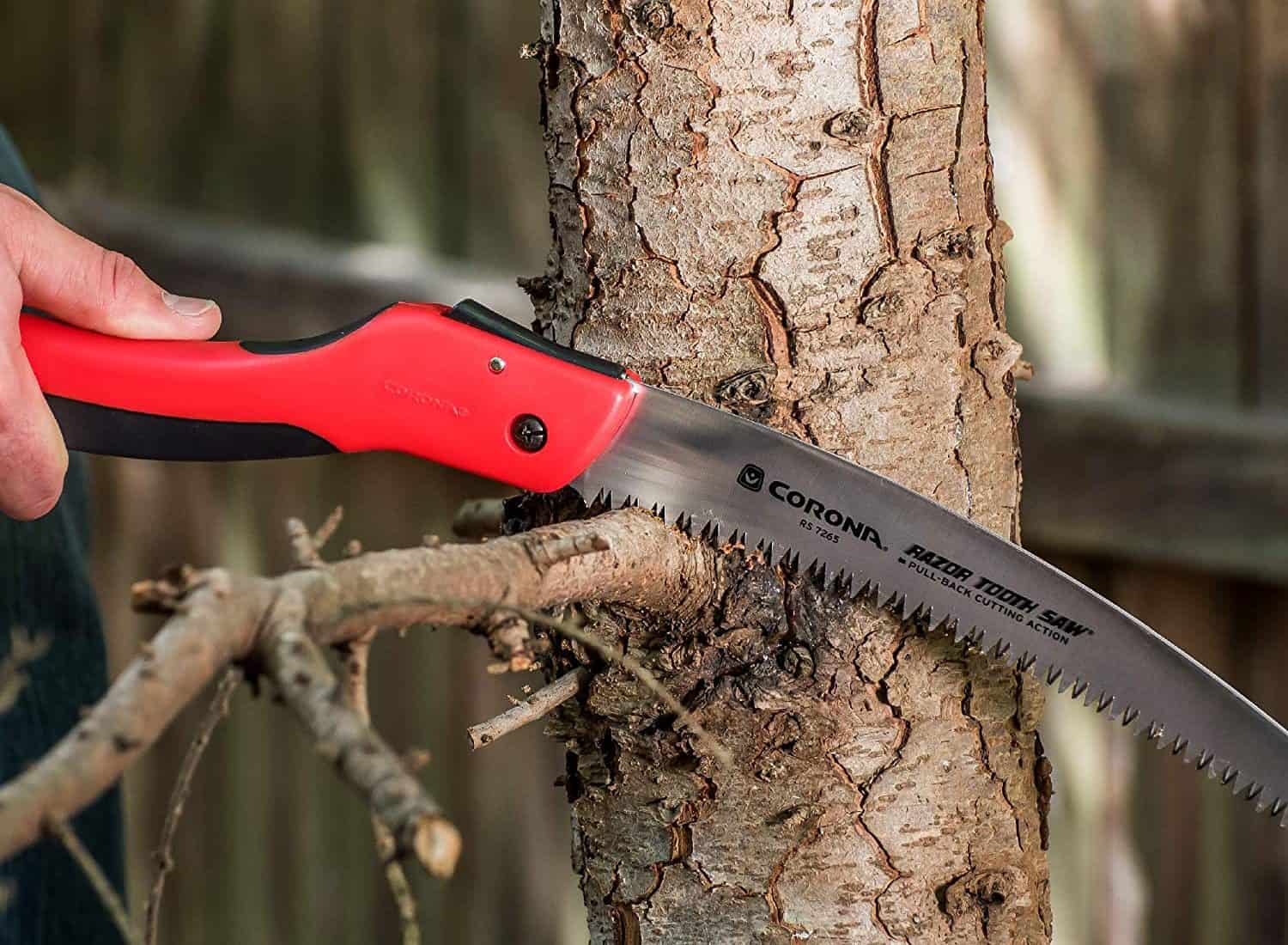
Pruning saws are perfect for cutting away thicker limbs. They are available in a variety of sizes and can handle branches up to 2 inches in diameter. Some have roughly slanted teeth that cut on both the push and pull operations, while others cut only on the pull stroke.
This allows you to apply some muscle mass to the cut, preventing the jaws from sticking. A fantastic option is foldable pruning saws since they are easier to store.
3. Loppers
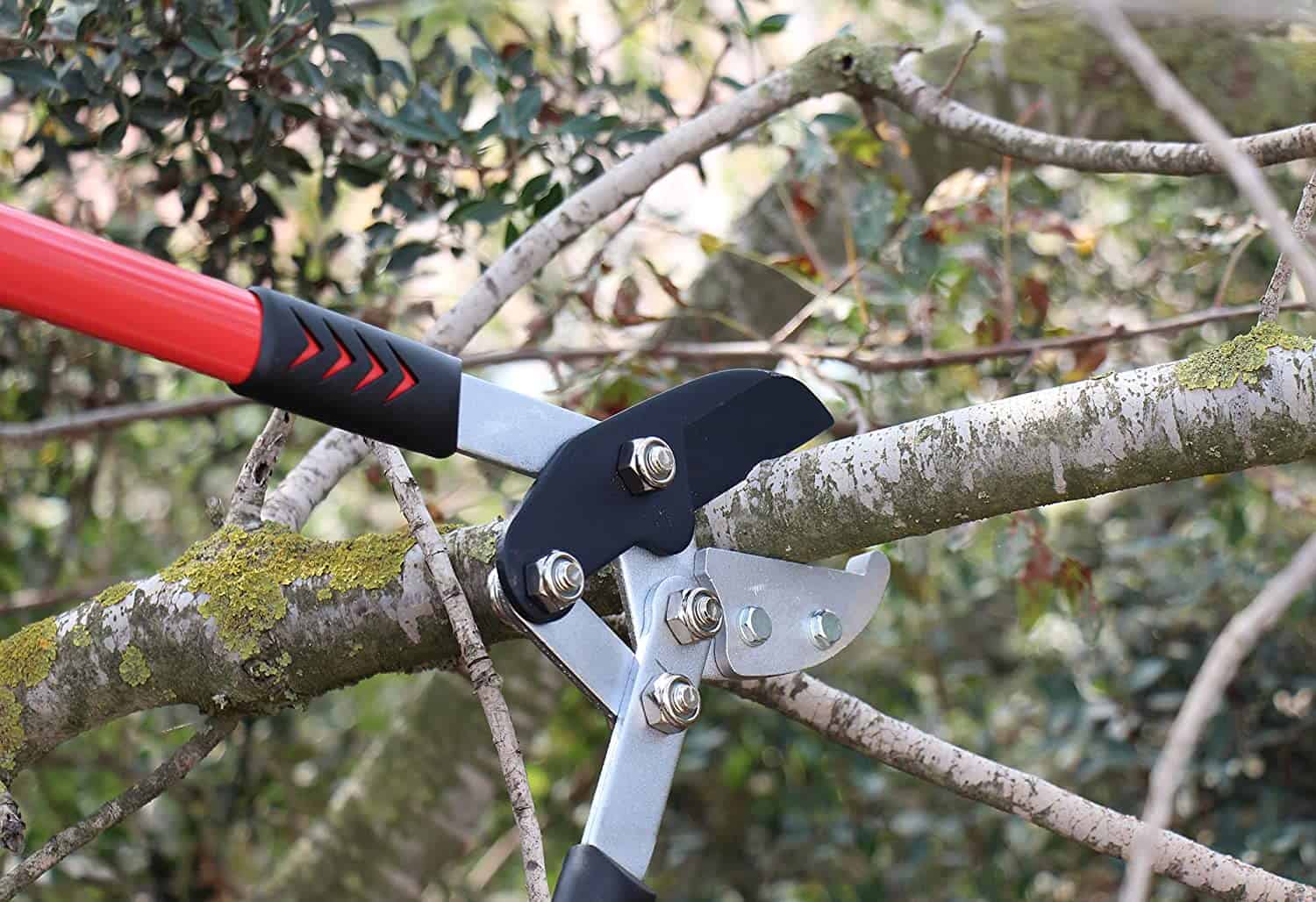
Loppers cut stiff branches up to 1.20 inches thick, have long handles for excellent grip, and massive blades. They are perfect for heavy-duty trimmings and they are a good compromise between hand pruners and pruning saws, as loppers are more powerful than secateurs, yet they require less effort than the saw.
The bigger the grips, the more force you’ll have, allowing you to cut a larger limb. In order to grasp out-of-the-way branches, you should look for loppers with telescopic levers.
4. Pole pruners
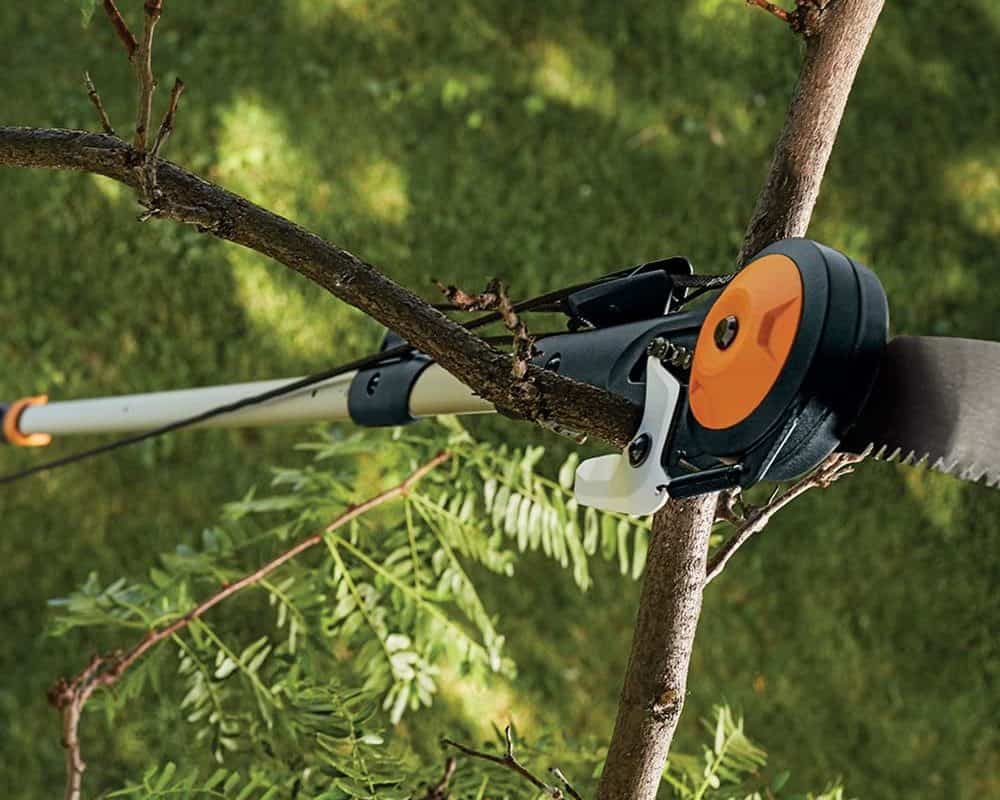
Pole pruners come in handy for trimming trees by extending your range. They work similarly to ordinary saws and loppers, with the exception that you must draw a rope handle to shut the string trimmer blades. Pole pruners can trim down limbs up to 5.5 inches wide and can be employed on any tree.
The best thing is that most pole pruners can attain heights of 8 feet or more, obviating the need for a platform. It’s also worth mentioning that there are electrical pole pruners on the market.
Final pruning tips
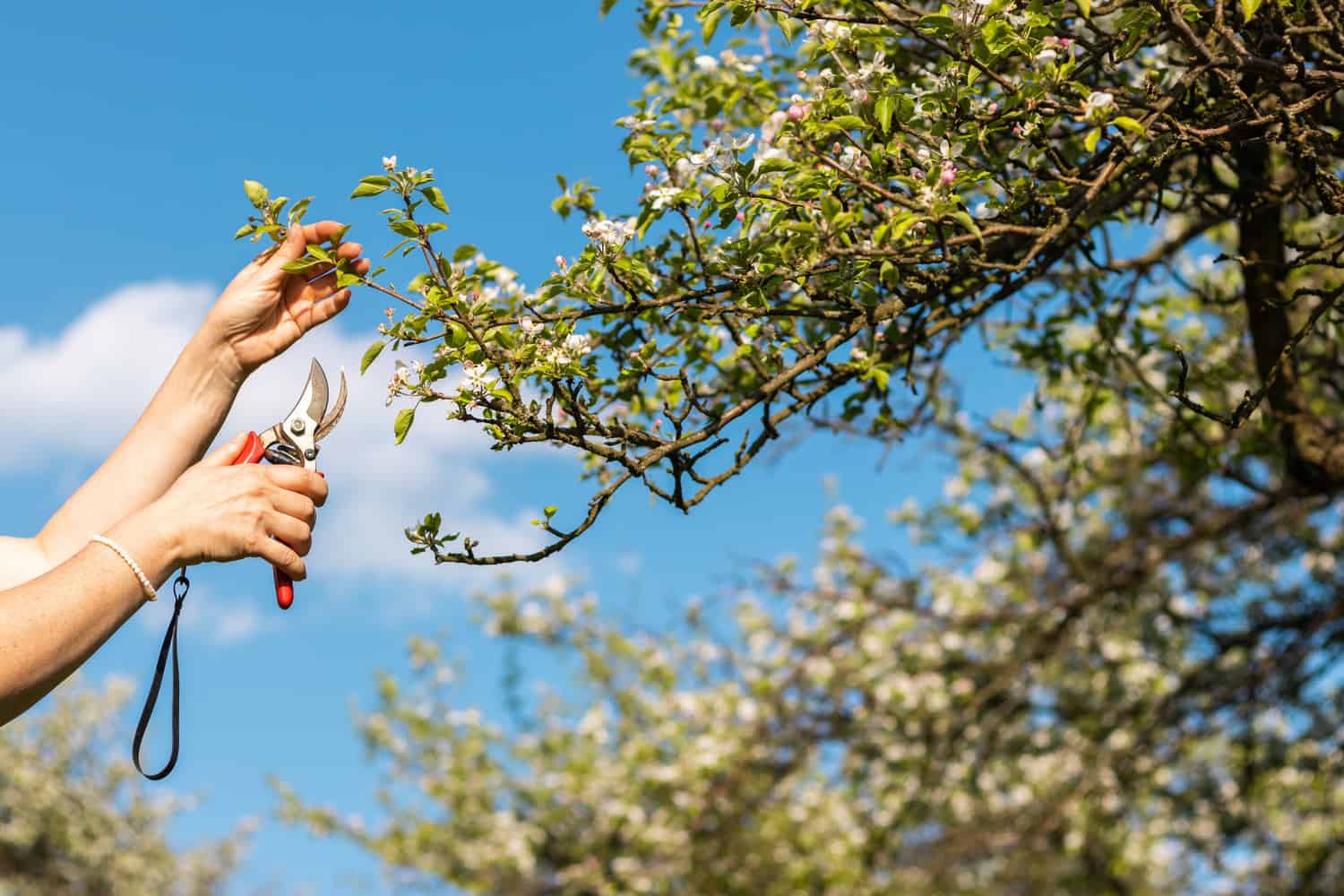
- Start by sawing away all the rotten or broken wood. Be certain to remove any buds from the tree’s core as well as everything from the major limbs.
- Trim your tree at an angle to make sure it grows in the right direction.
- If the upper branches of the tree grow too large and begin to shade the lower limbs, cut them out.
- Prune to keep the tree’s size and development under control.
- When two branches are almost aligned or overrun each other, eliminate the least valuable limb, considering both horizontal and vertical space.
- When trimming around a bud, make a precise cut that is neither too close nor too far away from it.
- Do the pruning when the tree is dormant. It is the best option for the tree and the most convenient for you.
- Prune on a regular basis.
- Cuts should be spaced out across the crown.
- To encourage growth, you shouldn’t be afraid of pruning.
- Even if your tree is old, avoid the urge to trim off massive limbs.
- As a general rule, avoid cutting through branches with a diameter of more than 4-5 inches.
- Employ razor-sharp scissors, loppers, and a decent saw.
- When pruning infected trees, sanitize equipment with alcohol or bleach after each trim.
- Don’t prune too early in winter to avoid freezing.
Conclusion
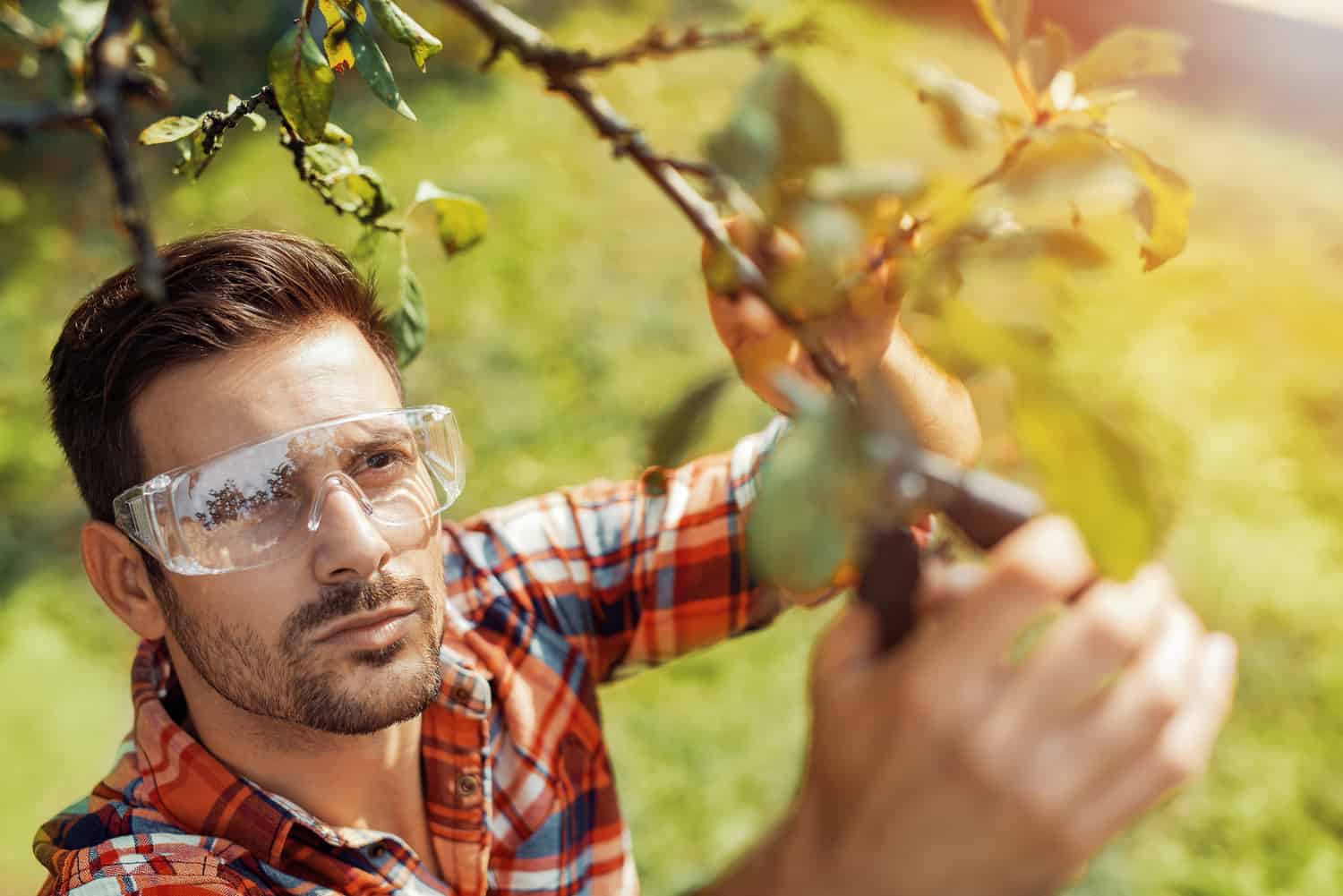
Pruning is a skill that develops with practice. Never be hesitant to explore and learn as you progress, and don’t be reluctant to check out a quality article on the topic.
By understanding your tree, its role, and most importantly, when and how it blooms, you can prune it properly. Take care of your tree and it will love you back!

